By CBA’s Australian economics team
Key Points:
- We expect the expiry of JobKeeper (JK) at the end of March to result in up to 110k job losses.
- The travel sensitive sectors are likely to bear the brunt of losses unless there is targeted industry assistance.
- However the leading indicators of the labour market remain firm.
- As a result we expect that the negative impacts on the labour market from the ending of JK will be fairly short lived from a macroeconomic standpoint.
One of the burning questions facing the community is the impact of the looming JK expiry. In this note we make an estimate of how many jobs maybe lost when the JK payment expires at the end of March 2021.
On our calculations we estimate job losses of up to 110k when JK expires. Jobs in travel sensitive sectors like transport, accommodation and arts & recreation look to be most at risk. However given the strength of the leading indicators of the labour market we expect that the overall impacts on the labour market will be short lived and any negative impact on spending will be minimal.
Some facts about the JobKeeper payment
The number of people receiving the JK payment has fallen quickly as the economy has recovered. A feature of the JK payment is that businesses have had to requalify for the payment at different points in time. At its peak in Q2 and Q3 20 around 1 million businesses and 3.6 million employees were receiving the JK payment. These numbers dropped to 500k businesses and 1.6million employees in Q4 20. And then to 960k employees in January.
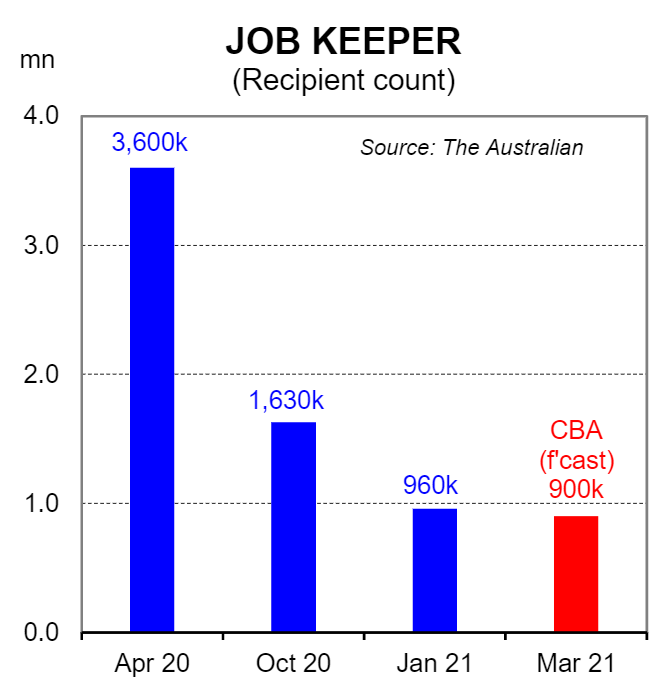
The V-shaped recovery in employment has also led to falling JK numbers. If a worker on JK leaves to take up a new position, the business they leave is unable to access the wage subsidy for their replacement. So labour market turnover has also reduced the number of JK recipients. Of the 878k jobs lost from Feb-May 20, 814k (~93%) were regained by January 21.
An industry breakdown to Q4 20 shows that arts & recreation and rental, hiring & real estate were the industries that had the highest share of employees on JK in Q4 20 (chart 2).
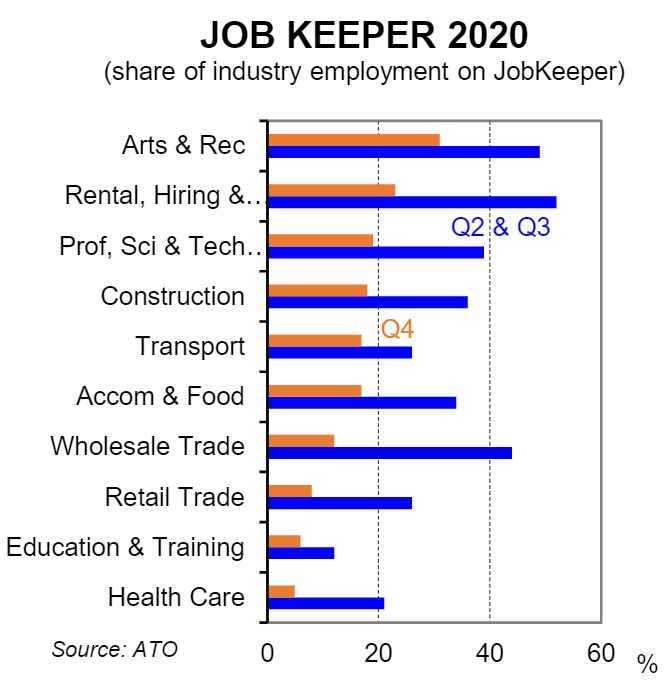
How many jobs are at risk when JobKeeper expires?
In order to calculate the number of jobs at risk when the JK program expires we need to make some assumptions around the number of people on JK when the program ends at the end of March. Businesses will not need to requalify for the payment between January and March. With 960k receiving the payment in January we assume that around 900k will still be receiving the payment at end March. Next, we group industries into high, medium and low risk of job losses when the JK payment expires. We estimate that high risk industries will see up to 25% of employees on the JK payment lose employment, up to 10% in medium risk industries and 5% in low risk industries.
We see transport, arts & recreation and accommodation & food services industries most at risk of job losses at the end of JK(i.e. we classify them as high risk). These industries are sensitive to international travel and also suffer badly when restrictions and lockdowns are imposed. The Q4 20 national accounts indicated that on a production basis transport (-16.8%/yr), accommodation & food services (-13.1%/yr) and arts & recreation (-8.2%/yr) were the industries that fared the worst in 2020.
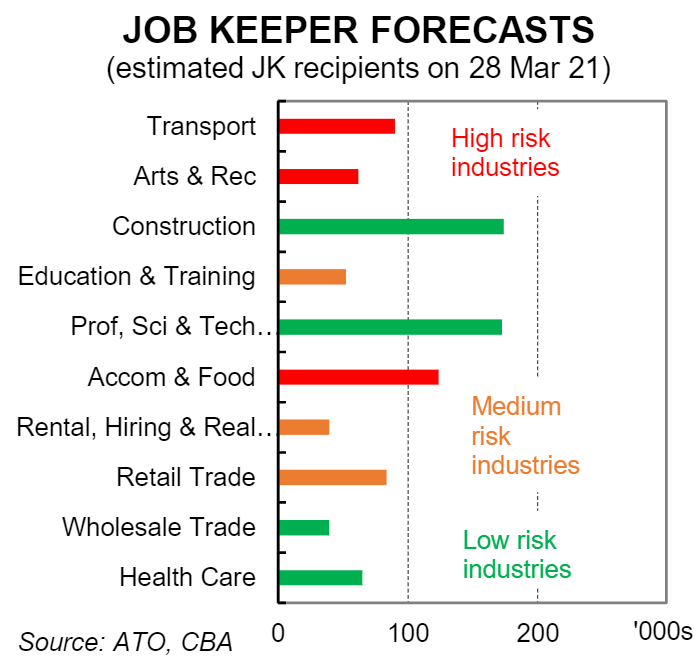
We have classified education and retail trade as medium risk industries. According to the Q4 20 national accounts, production in retail trade (+6.2%/yr) and education and training (+0.8%/yr) were both up over the year. However, both industries are exposed to international student / tourist flows and retail trade is highly exposed to COVID-induced disruptions. We make a conservative assumption with rental, hiring & real estate and classify it as a medium risk industry. While the residential property market is now booming, a relatively high share of people in this industry were receiving the JK payment in Q4 20.
We have classified all other industries (construction, professional, scientific and technical services, wholesale trade and health care) as low risk.
Based on 900k people receiving JK just prior to the expiry and our industry risk weightings and assumptions we estimate that up to 110k people could be stood down when JK expires. However we do note that this estimate is highly dependent on the underlying assumptions and the risk lies with a larger number.
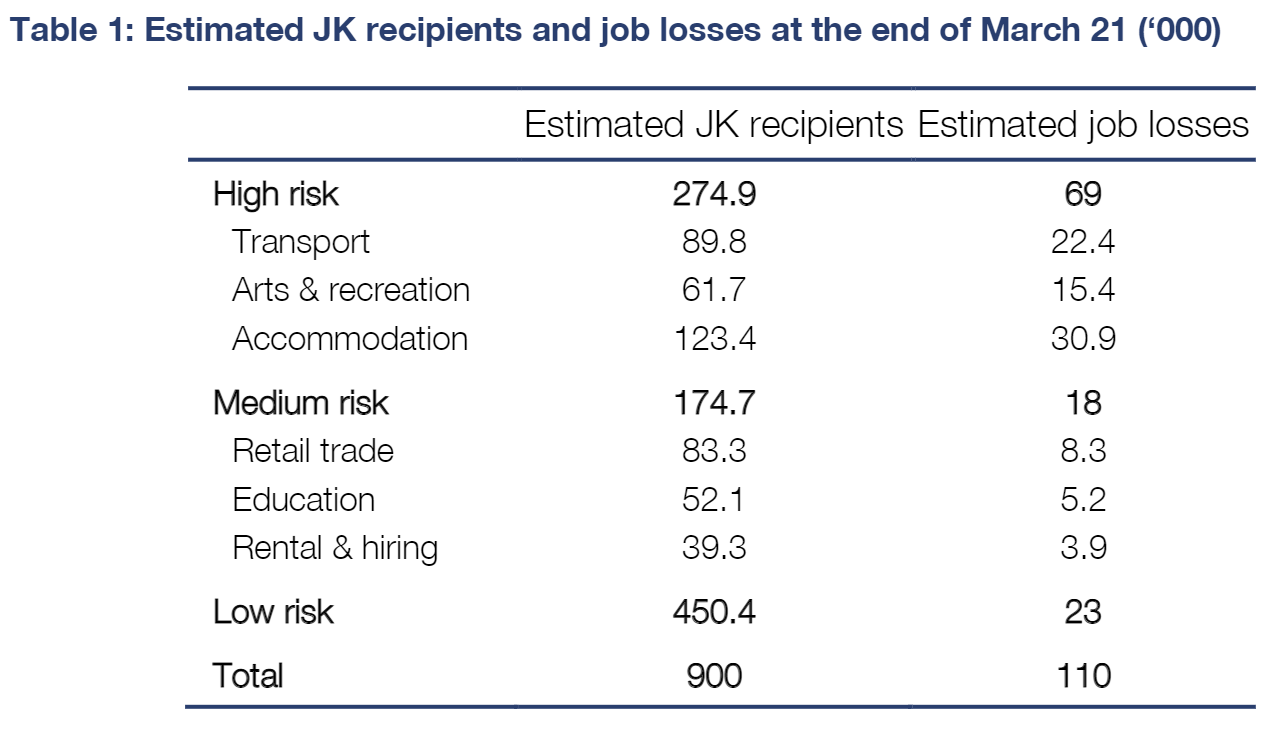
How will these job losses affect the labour market?
There are several reasons which suggest that our estimated potential 110k job losses from the expiry of the JK program in March will have a relatively short lived impact on the labour market as a whole.
Firstly, some people may find a new job relatively quickly and therefore won’t be counted as being unemployed. The latest ABS job vacancies data indicates that there were a record number of 254k vacancies in the November qtr 20.
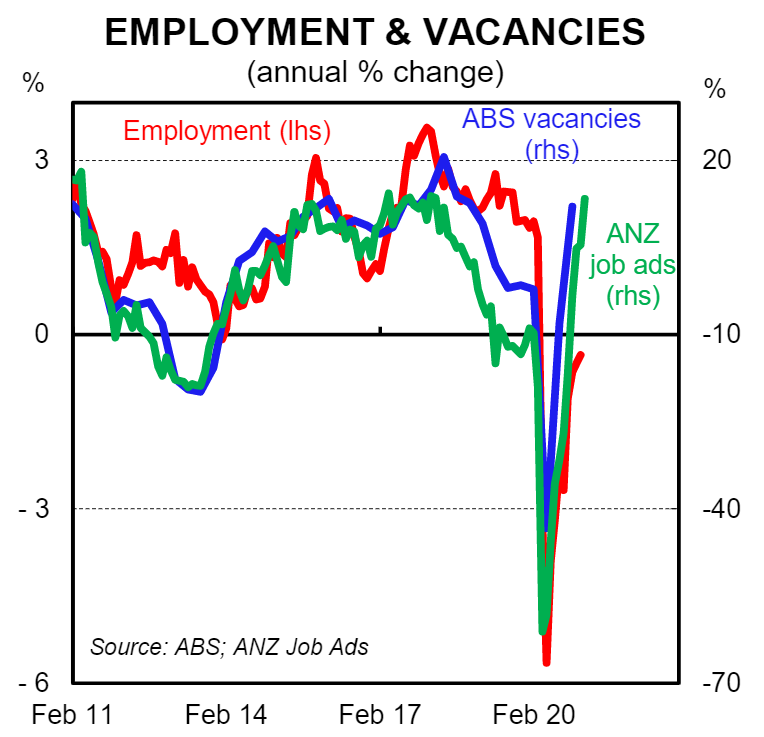
Secondly, some people who lose their job may choose to step out of the labour force for a period of time. The JK program and other government support has left some employees better off financially than before the pandemic. So some people who lose jobs may feel in a position to take a break, especially if another job isn’t available straight away. If a person steps out of the labour market then they will not be counted as unemployed and will not put upward pressure on the unemployment rate. Rather the labour market participation rate goes down.
Another reason to be optimistic that the expiry of the JK will be manageable is the strength of other leading indicators of labour demand. Labour hiring plans from NAB’s business survey suggest that businesses will continue hiring in the near-term. Unemployment expectations from WBC/MI’s consumer sentiment survey were also well below pre-pandemic levels in February 2021. Our employment growth model, which incorporates these leading indicators (here), points to a continuation of solid employment growth in the near-term.
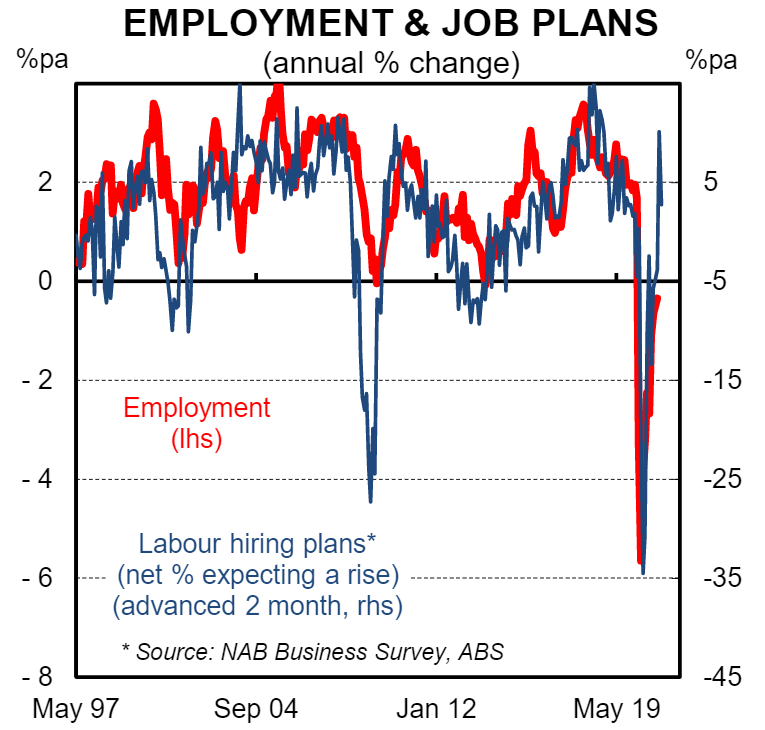
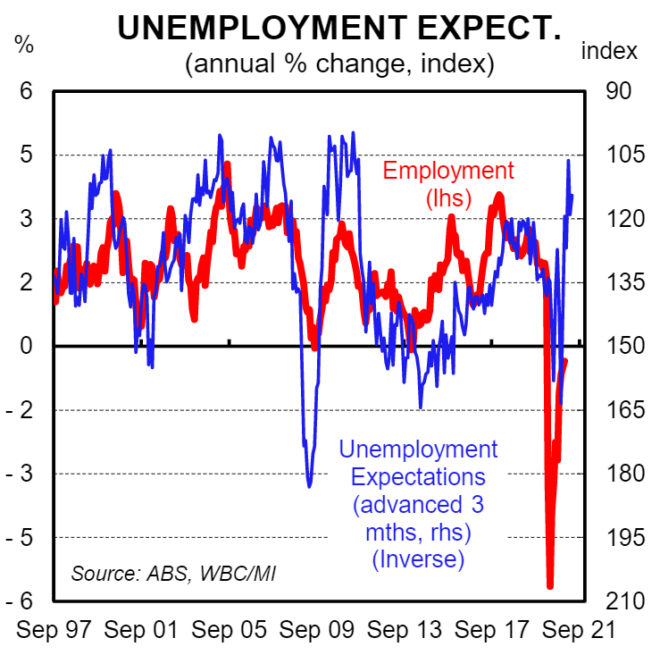
In terms of the monthly labour force survey, the impacts of the JK expiry won’t be evident until the May survey (due 17 June 21). The April numbers won’t capture the JK expiry because the ABS counts anyone who has received income from employment in the last four weeks as being employed. We will look to our internal data to provide an early indication of the expiry of JK on the labour market and consumer spending.

